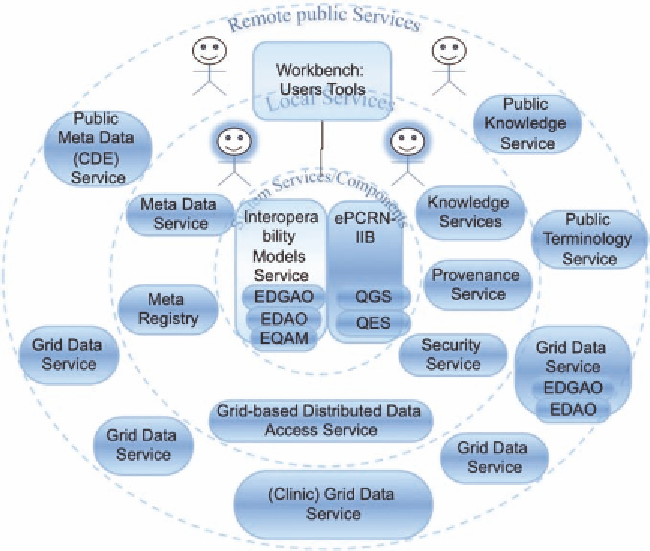Information Technology Reference
In-Depth Information
Figure 1. Overall Architecture
ontology while respecting individual data gover-
nance policies, thus creating a semantically-aware
architecture. The function of each of these ele-
ments is described below in more details.
The
EQAM
is a model representation that
allows end users to capture their data needs in
simple or reasonably complex logical constructs
based on vocabulary controlled clinical concepts
enriched by the terminology knowledge resources.
Each EQAM instance represents a semanti-
cally annotated set of logically combined clinical
concepts that can be translated into other more
specific formats. We refer to this as the problem
model, in which users specify their specific data
requirements or characteristics. For example,
for clinical trials, this model can represent the
eligibility criteria of a trial; for clinical care, it can
represent the combination of data elements that
need to be retrieved. An example of an eligible
criteria model to support clinical trials in primary
care is illustrated in Figure 2.
The use of the
domain ontology
stems from
the growing recognition of the importance of
semantic differences in application areas and the
use of models to represent them and the value of
making these models more explicit, configurable
and maintainable (Musen, M. A. (1998), Cruz, I.
F. et al (2009), Farooq, A. et al (2010)). These
models are referred to as
domain models
. For
EHRs, the domain model is one of patients, of
their medical problems and the interventions that
health practitioners may make in the management
of patients. However, domain models represent
instances of domain classes and their relationships,
which if used by themselves create system de-
pendencies. However, the
domain (data) ontol-
ogy
provides a representation of the domain re-
spective main concepts, their attributes and
relationships. They can be viewed as 'formal
descriptions of the classes of concepts and the
relationships among those concepts that describe
an application area' (Musen, M. A. (1998)), from

Search WWH ::

Custom Search